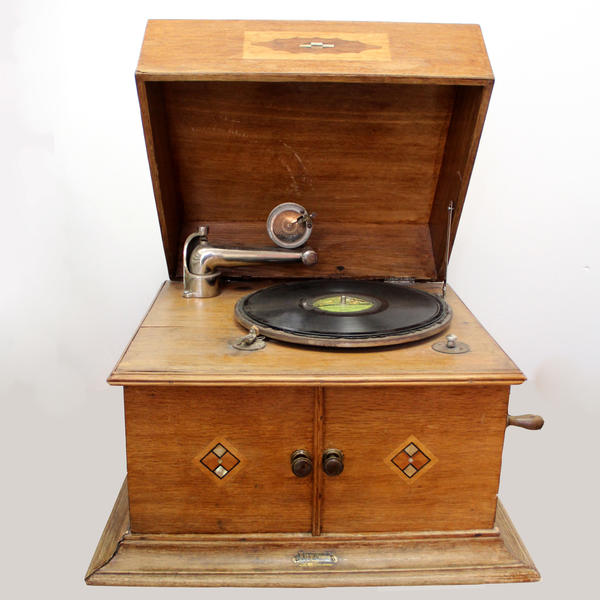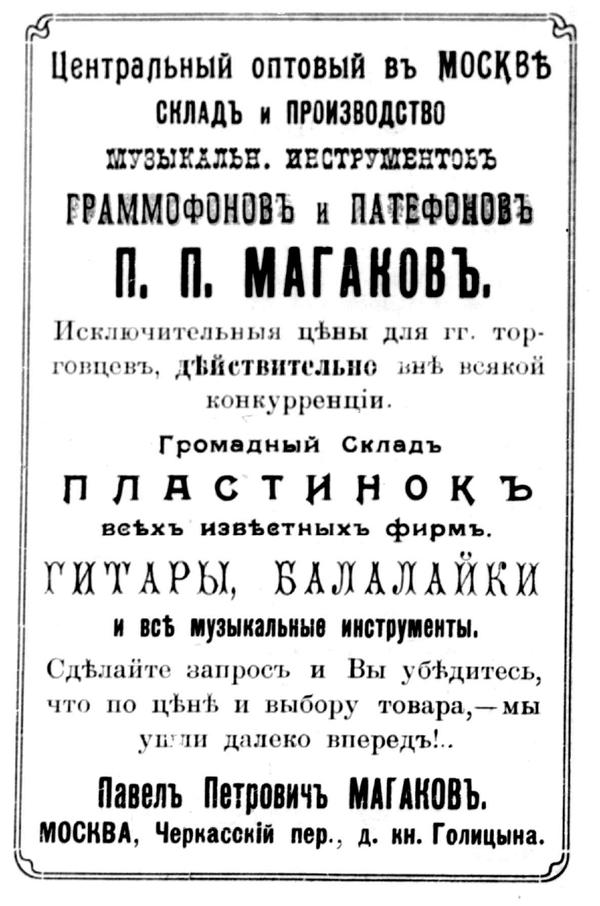This museum gramophone was made in the 1910s and belongs to later models. In addition to a spring mechanism that was standard for all gramophones, a needle and its movable metal rod that is called a tonearm, this gramophone is equipped with a horn. This is a special tube that is attached to the mechanism and makes the device sound louder.
Gramophone with built-in horn
Creation period
1910s
Dimensions
36x50x45 cm
36x50x45 cm
36x50x45 cm
Technique
Wood, metal
Exhibition
1
Open in app#1
Gramophone with built-in horn
#3
#10
The horn of the museum exhibit is built into the wooden case. However, some gramophones had a large horn in the form of a funnel fastened to the outside of the case. To avoid confusion, the first variety of the devices was called hornless.
#11
The first hornless gramophones appeared around 1912. They were made in the form of small cabinets or cases from different timber species. Gramophones were decorated with ornamental elements, wood carvings or inlays in form of patterns laid out of precious stones, metal, marble, ceramic or mother of pearl. The preserved catalogues of different factories price such gramophones at 50 rubles (which is equivalent to about 32 thousand rubles today).
#4
Built-in horn
#5
The gramophones with the horn concealed in the case can be considered the first devices with a toggle switch. The cabinet doors played the role of the toggle switch or sound control: the doors were opened to make the sound louder, or closed to turn it down.
#12
Hornless gramophones were a transitional model between the heavy gramophones that permanently occupied a certain place, and portable suitcase phonographs. Sometimes the latter were mistakenly called gramophones. The phonograph, invented by Pathé brothers in 1907, differed from the gramophone in its principle of operation. Instead of a needle, a phonograph had a sapphire ball for playing records. Unlike the gramophone needle, this ball did not move from edge to center, but vice versa.
#13
The museum gramophone is made of wood with metal inserts. There is a wooden cover at the top and two doors at the bottom, hiding a small horn. A lever for winding the spring mechanism is attached to the right side of device.
#6
The plate with the name of the trading house
#9
The metal plate features the name of the Trading House: P.P. Magakov, Moscow, Cherkassky Lane, princess Golitsyna’s house. This firm was one of the most famous in the 1900s. The last line of the inscription is worn down by time and nearly unreadable. The text was recovered based on the advertising page of the Gramophone World magazine dated February 1912.
#7
Advertisement in the Gramophone World magazine dated February 1, 1912
read morehide
00:00
00:00
1x
Gramophone with built-in horn
Creation period
1910s
Dimensions
36x50x45 cm
36x50x45 cm
36x50x45 cm
Technique
Wood, metal
Exhibition
1
Open in app
Share




